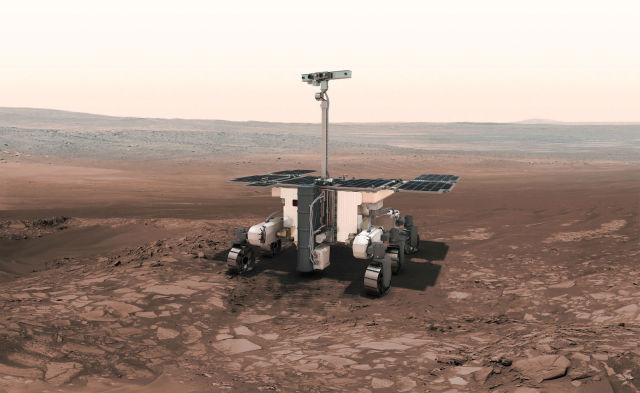
The European and Russian teams have run out of time for the 2020 launch window.
The ExoMars mission to carry a rover to the red planet will not launch this year as planned, according to the European Space Agency (ESA) and Russia’s Roscosmos. The agencies announced that several components of the spacecraft, particularly the parachutes, still need testing. That means they’ll miss the planned 2020 launch window and will need to wait for the next opportunity happening sometime between August and October 2022.
The rover itself (called Rosalind Franklin), along with the landing platform and Proton launch vehicle are all ready for launch. However, two parachutes needed to slow the spacecraft down during Mars entry, descent and landing must still be qualified following multiple failures during earlier testing. “Launching this year would mean sacrificing essential remaining tests,” said ESA director Jan Woerner in a press conference today. “This is a very tough decision, but I am sure the right one.”
Spacecraft can only be launched from Earth to Mars every 26 months when their orbits line up. The rover mission has already been delayed once, as it was originally set to be launched in 2018. The ESA and Roscosmos did successfully launched the ExoMars Trace Gas Orbiter in 2016. That vehicle is designed to monitor rare gases on Mars and act as a relay for the ExoMars rover.
The ESA’s cautious approach is understandable, considering it already lost a lander (the Schiaparelli), during the 2016 mission. The teams will now have plenty of time to test the 15- and 35-meter wide parachutes that failed in May and August 2019 (required because the Roscosmos-designed lander lacks a powerful retropropulsive rocket system). New tests are scheduled for March in Oregon.


